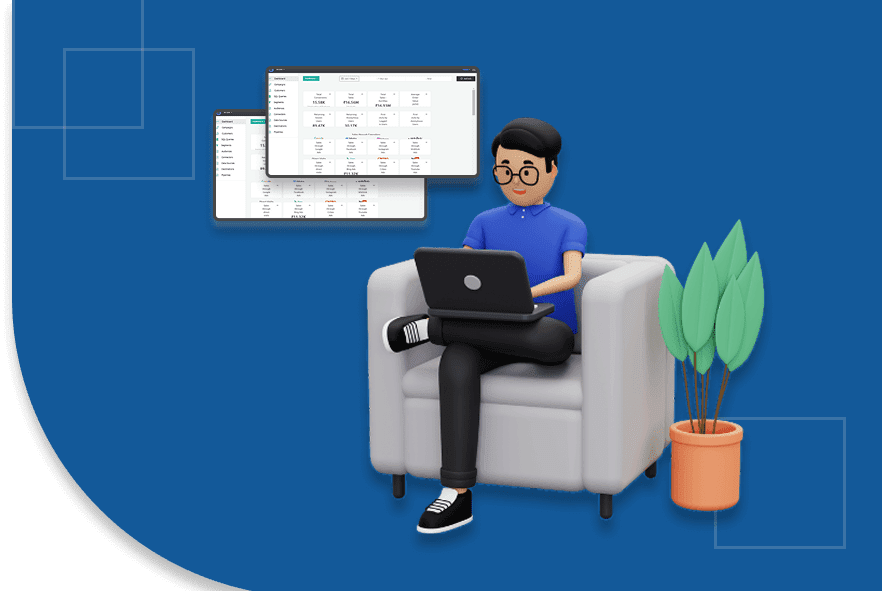Imagine knowing exactly what your customers want before they even tell you. With first-party data, you can craft personalized experiences that connect with your audience on a deeper, more meaningful level, driving both loyalty and engagement.
What Is First-Party Data?
First-party data is the golden standard for creating personalized experiences that resonate with your audience. Collected directly from your interactions with customers—whether through your website, apps, or in-store visits—your business wholly owns and controls this data. The raw material powers your ability to understand and engage customers on a deeper level.
This type of data differs significantly from second and third-party data, as it's gathered firsthand by your organization, ensuring its relevance and accuracy. Sources include everything from transaction records and customer feedback to activity on your digital platforms. With first-party data, you're not just observing customer behaviors; you're engaging with them in a context you control, which lays the groundwork for truly personalized experiences.
As we read about the benefits of using first-party data, you'll see how it enhances customer insights and fortifies compliance and data privacy—key concerns in today’s data-driven marketplace.
Benefits of Using First-Party Data for Personalization
Harnessing first party data is a powerful strategy to enrich customer interactions and improve marketing efforts. Here’s how using this data can lead to more effective personalized experiences
- Higher Accuracy in Customer Insights:
- Gain precise insights into customer preferences and behaviors.
- Tailor your marketing strategies with confidence, knowing your data is accurate.
Key to the success of Ingest Labs is its ability to translate raw first-party customer data into meaningful insights.
- Greater Control Over Data Usage and Privacy Compliance:
- Manage data with full autonomy, ensuring compliance with privacy laws like GDPR.
- Personalized experiences become more trustworthy, enhancing customer relationships.
- Enhanced Customer Trust and Engagement:
- Customers feel valued when they see content that reflects their interests and history with your brand.
- Increased engagement rates by delivering relevant offers and content.
Sophie Page from Forward Role says in her LinkedIn post, “In the vast landscape of digital analytics, it’s First-Party data’s time to shine.”
Utilizing first-party data allows Ingest Labs clients to not only meet but exceed customer expectations by delivering truly personalized experiences that drive loyalty and value.
Let’s look into how this valuable data is collected and managed effectively.
Collecting and Managing First-Party Data
Collecting and managing first-party data is crucial for delivering personalized experiences that genuinely connect with your customers. Let's explore how you can gather and use this valuable data effectively.
- Methods of Collecting First-Party Data:
- Capture data through forms, subscriptions, and direct customer interactions.
- Utilize analytics tools to observe and record user behavior on your digital platforms.
- Importance of a Customer Data Platform (CDP):
- Centralized Data Management: Consolidate data from various sources for a unified customer view.
- Enhanced Data Utilization: Use the CDP to activate data across marketing channels efficiently.
The more data you collect, the more accurate and reliable your insights will be. Read how Ingest Labs aligns with this.
- Tips for Maintaining Data Accuracy and Completeness:
- Continuously update and verify the accuracy of the data to keep it relevant.
- Employ practices to clean and deduplicate data to ensure quality.
By implementing these strategies, Ingest Labs ensures that the first-party data collected is comprehensive and primed for creating personalized experiences that drive engagement and loyalty.
As we move forward, let's read about how this data drives the segmentation of your customer base, enabling even more tailored marketing efforts.
Segmenting Your Customer Base Using First-Party Data
Effective segmentation of your customer base using first-party data enables the creation of highly personalized experiences. This strategic approach allows you to understand and cater to the unique needs of different customer groups.
- Process of Segmentation Based on Customer Data
- Data Collection: Gather comprehensive data directly from your interactions with customers.
- Analysis: Utilize analytical tools like the ones provided by Ingest labs to identify patterns and group customers with similar traits.
- Using AI and Machine Learning for Advanced Segmentation
- Automated Insights: Deploy AI to uncover deeper behavioral patterns and predictive trends.
- Dynamic Segmentation: Continuously refine segments as new data becomes available, ensuring personalized experiences remain relevant.
- Segmentation Criteria: Behavior, Demographics, and Psychographic
- Behavioral Insights: Segment based on purchase history, product usage, and engagement levels.
Ingest Labs segments customers based on the products they have purchased, the pages they have visited on your website, and the emails they have opened. This information can then be used to create targeted marketing campaigns.
- Demographic Information: Classify groups by age, location, income level, etc.
- Psychographic Profiling: Understand motivations, preferences, and lifestyles to tailor personalized experiences.
Leveraging first-party data for segmentation not only enhances the accuracy of your marketing efforts but also deepens the connection with your audience.
What happens after this? Let’s explore how these segmented insights can be transformed into targeted and effective personalized marketing campaigns.
Creating Personalized Marketing Campaigns
Leveraging first-party data allows you to create highly personalized marketing campaigns that resonate deeply with each customer segment. Here’s how you can craft these tailored experiences. Using Ingest Labs’ tool, Ingest ID utilizes a unique first-part ID, and you can optimize the experience through personalization platforms.
- Tailoring Messaging and Content Based on Segments:
- Develop content that addresses each segment's specific needs and interests.
- Use insights from your data to craft messages that speak directly to the customer, enhancing personalized experiences.
- Choosing the Right Channels and Touchpoints:
- Identify and utilize your segments' active channels. Here’s how Ingest Labs helps you make the fullest out of channels.
- Ensure a seamless customer experience across all platforms, from social media to email.
- Examples of Successful Personalized Marketing Campaigns:
- A retail brand used first-party data to offer customers personalized discounts, increasing loyalty and sales.
- A service provider tailored their communication based on user behavior, significantly improving customer satisfaction rates.
These strategies empower you to not only meet but exceed your customers' expectations, ensuring that each interaction contributes to a robust, personalized experience.
As we look forward to integrating these campaigns into real-world interactions, we'll explore how they can effectively deliver across multiple channels to ensure a seamless customer experience.
Delivering Personalized Customer Experiences
Delivering personalized customer experiences effectively is the key to fostering loyalty and increasing engagement.
- Real-Time Data Application in Customer Interactions:
- Adapt interactions in real-time based on current customer behavior. With Ingest Labs, you don’t have to wait for data to accumulate. It provides real-time insights into customer behavior, enabling you to respond promptly to changing trends and optimize your marketing efforts on the fly.
- Anticipate customer needs and offer solutions before they even have to ask.
- Omnichannel Personalization Strategies:
- Ensure personalized experiences are seamless across all digital and physical touchpoints.
- Utilize data to provide a unified message whether the customer is online, on mobile, or in-store.
- Case Studies Showing Effective Personalization:
Here are two factual examples that illustrate effective personalization through real-time data:
- Amazon’s Personalized Recommendations:
Amazon employs complex algorithms to offer real-time product suggestions based on user browsing and purchasing history. This method is highly effective and contributes significantly to sales, with reports indicating that up to 35% of purchases come from recommendations.
- Capital One’s Personalized Banking Advice:
Capital One uses transaction data and customer interaction history to provide personalized financial advice and product recommendations. Their mobile app integrates these insights to help customers manage their finances more effectively, increasing customer engagement and satisfaction.
These strategies ensure that every customer interaction with your brand is tailored and relevant, enhancing the overall impact of personalized experiences.
Let’s now examine how to measure the effectiveness of these personalized strategies to ensure they deliver the intended outcomes.
Measuring the Impact of Personalization
Understanding the effectiveness of personalized experiences is crucial for refining strategies and ensuring maximum ROI. Here’s how you can measure the impact of your personalization efforts effectively.
- Key Performance Indicators (KPIs) for Personalization:
- Customer Satisfaction Scores: Track changes before and after implementing personalized experiences.
- Conversion Rates: Compare conversion rates to gauge the effectiveness of personalized campaigns.
- Customer Retention Rates: Monitor retention as a direct indicator of successful personalization.
- Tools and Techniques for Measuring Success:
- Use advanced analytics software technologies to analyze customer behavior and response deeply. Explore how you can better understand all your campaigns through Ingest Labs’ campaign performance insights.
- Implement A/B testing to compare the performance of personalized experiences against non-personalized baselines.
- Directly gather customer feedback focused on their perception of personalized interactions.
- Continuous Improvement through Data Analysis and Feedback:
- Use ongoing data insights to refine and improve personalized experiences continually.
- Adjust personalization tactics based on measurable outcomes and customer feedback.
By systematically measuring these aspects, Ingest Labs ensures that your personalized experiences meet and exceed customer expectations, driving engagement and loyalty.
Now, let's summarize the key points discussed and consider future trends in first-party data and personalization.
Conclusion
As we've explored, harnessing first-party data is essential for crafting truly personalized experiences that resonate deeply with your customers. Leveraging this data allows for more accurate insights, enhanced customer engagement, and a significant uplift in business outcomes. By focusing on individual customer needs and behaviors, you're not just marketing to an audience but engaging with individuals.
Ingest Labs is pivotal in enabling businesses to unlock the full potential of first-party data. Our solutions ensure that your data is secure and intelligently utilized to deliver personalized experiences that customers value. With Ingest Labs, we step into a new era of data-driven marketing, where every customer interaction is an opportunity to delight and convert.Ready to transform your marketing strategies with the power of first-party data? Meet with us today to learn how we can help you build more meaningful and profitable customer relationships. Let's create personalized experiences that set your brand apart.






